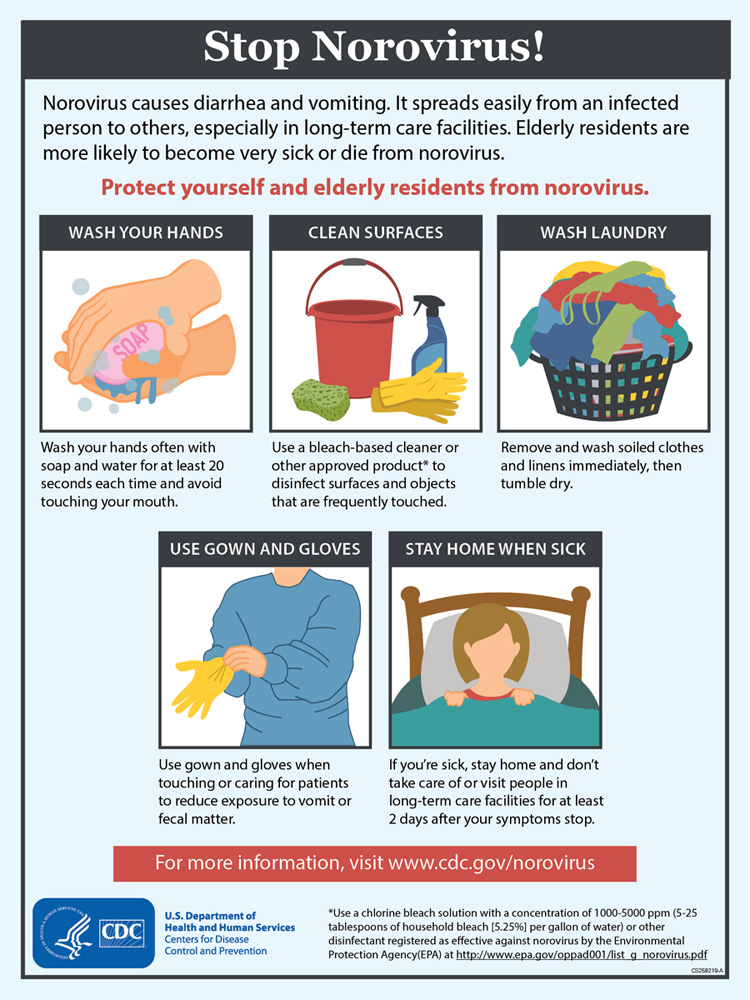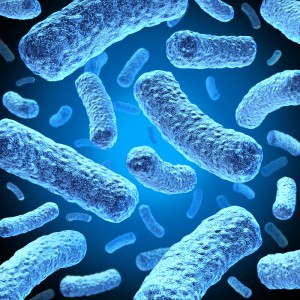Norovirus or the stomach flu delivers discomfort to people worldwide. Each year 22 million people become infected by the norovirus just in the United States. Norovirus is the most common type of gastroenteritis. It is a condition that causes inflammation of the stomach and intestines. Virus symptoms include painful stomach cramping, throwing up or diarrhea. Norovirus transmission occurs by person-to-person contact, via contaminated food or water and by touching infected surfaces such as those in the laundry room.
Norovirus is highly contagious. If you, a family member or a roommate contact norovirus it is very important to sanitize and disinfect your entire household. This must include disinfecting laundry properly to avoid re-infection.The Public Health Agency of Canada warns that the virus can persist for days on surfaces. On hard surfaces the virus can thrive for up to 12 hours, and on carpet an astonishing 12 days.
Important Safe Laundry Tips When Dealing With Norovirus
Clothing or linens that been soiled with feces or vomit should immediately be cleaned. To lessen norovirus contamination risks, disposable gloves should be used while handling the dirty laundry. Carefully remove and dispose quickly of excess waste prior to placing laundry in the machine. Take precautions to keep the infected laundry separate from everyday laundry. Norvirus can easily become airborne. Avoid shaking the laundry or conducting any unnecessary movement of the soiled items.
Use a washer setting that will provide the maximum number of cycles. Do not overload the washing machine with laundry. Articles of laundry should be able to freely move within the wash cycle without undue bunching. When laundry care instructions allow utilize the warmest water setting possible. Hot water is best. Norovirus is most effectively killed by heat and products containing chlorine bleach, in particular particularly sodium hypochlorite. Along with laundry detergent, utilize chlorine-based-bleach per usage directions and advised care label instructions. Color-safe-bleaches ,which typically contain hydrogen peroxide, will not kill the norovirus. Laundry must be fully dried, and not damp to kill the virus. Avoid hang-drying. Use the hottest dryer setting that your laundry will tolerate.
Any surfaces that the soiled laundry or the person handling the laundry has touched should be cleaned by using bleach or a bleach-based household cleaner. This means disinfecting all impacted: hampers,laundry baskets, laundry room floor, folding surfaces, counter-tops, tops of washer and dryer, laundry room door handles and light switches. The CDC suggests a solution made with 5 tablespoons to 1.5 cups of household bleach per 1 gallon of water. As an added precaution after washing the soiled laundry, an empty hot water wash cycle with bleach should be run to clear any norovirus remnants in your washing machine.
After touching contaminated laundry hands should be thoroughly washed with hot water and soap. Hands should also be washed after loading wet laundry from the washing machine to the clothes dryer. Proper hand washing involves using hot water and soap. Hands should be scrubbed and rinsed for a full thirty seconds. Attention should be paid to fingernails. Additionally jewelry, rings and bracelets, should be removed and cleaned. Alcohol based gels will lessen norovirus, but usage is not as effective as vigorous hand washing.
Hopefully, you and your family will avoid having to ever experience a bout with the norovirus. Vigilant hand washing both at home and in public is a good preventative first step. However if you or a member of your household has the misfortune of catching the norovirus avoiding re-contamination, such as via soiled laundry, is key to restoring health. For further information on norovirus, including the new strains of norovirus, you can visit the Center For Disease Control.
Also Read Our Article on Preventing Germs And Bacteria in The Laundry Room for more Safe Laundry Tips.



